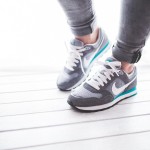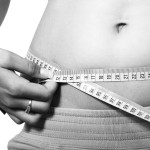It’s not swagger. I am just sore.
You know the feeling. Putting on your socks, going to the bathroom and scaling the stairs have all become painful pursuits. And have you ever noticed that it really hits you a day or even two after your workout?
This phenomenon is known as Delayed onset muscle soreness (DOMS). Also fittingly called muscle fever, it is the pain and stiffness felt in muscles anywhere from several hours to days post exercise, but peak soreness is typically felt 24 to 48 hours after.
I must admit that I embrace the muscle fever. “I like sore butts, and I cannot lie.” The tenderness is so bitterly sweet because while the aches and pains can be inhibiting, I associate them with progress and the coveted muscle gains. I mean something must be happening right? But should this really be my philosophy?
A common misconception is that this soreness equals a good workout. While this can be the case, it isn’t definitively true every time. DOMS is the inflammatory response to muscle tissue damage, which occurs because of ANY change in your exercise routine. Some examples include higher intensity, heavier weight, new activity, more repetitions etc.
Here is a scenario for you. I could have done a workout that consisted of 5 brand spanking new bicep exercises with heavy weights. This inevitably would make me very sore because I changed the type of exercise in addition to the intensity. If I were simply trying to build aesthetic muscle for a bikini competition, this might be a good workout. However, from a functional standpoint of wanting to be stronger, faster and healthier in order to enhance my quality of life, this wouldn’t be a very good workout at all! Moreover, it is really not beneficial to be so sore that subsequent exercise is greatly hindered or even worse does not happen. So consider yourself warned that soreness is not always beneficial.
I would say that most of the time, however, it is a sign of good things going down. That being said, it does get kind of frustrating after awhile so here are a few tips to reduce its severity and length.
- Water. Make sure to drink enough water before, during and after your workout as dehydration can lead to cramping. How much water you should consume depends a variety of factors, including, but not limited to age, gender, height, weight and intensity. Remember the number 8 for some rough guidelines – 8 ounces 30 minutes before, 8 ounces every 10 – 20 minutes during and 8 ounces no more than 30 minutes after.
- Massage. It has been shown to reduce inflammation. I understand that massage therapy can get spendy so you can also use a technique called foam rolling, which enables you to complete massage techniques on your own.
- Sleep. It heals the body. Literally. Shoot for at least 7 hours every night.
- Movement. It sounds counter-intuitive, but movement to get the blood flowing is one of the best things that you can do when you are sore.
- Stretching. Make sure to cool down and stretch thoroughly after every workout. You do not, however, want to ever stretch before you have warmed up with some activity.
“I like sore butts and I cannot lie…”








Leave a Reply